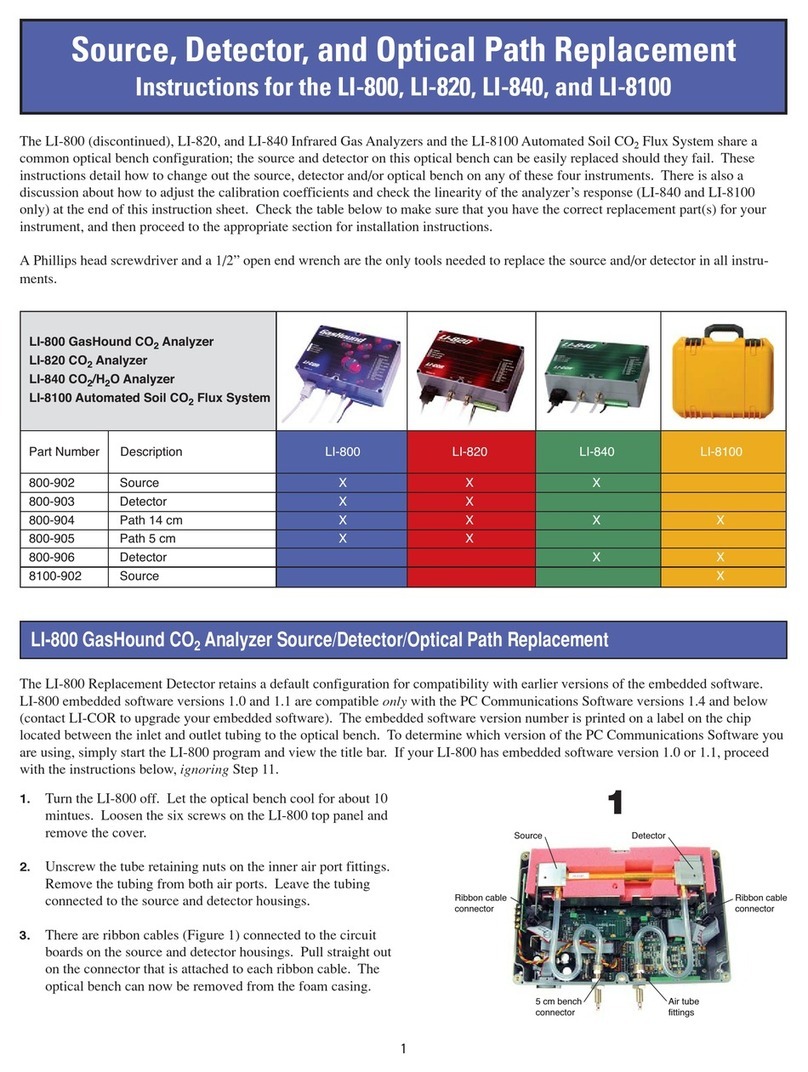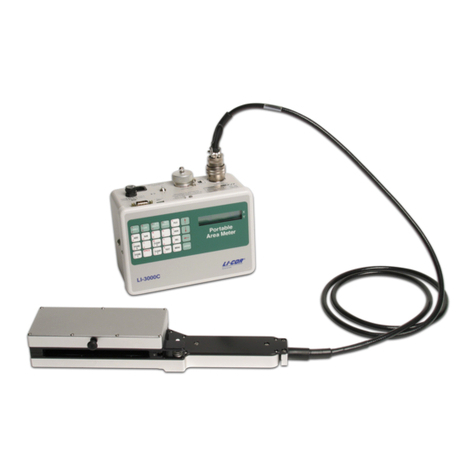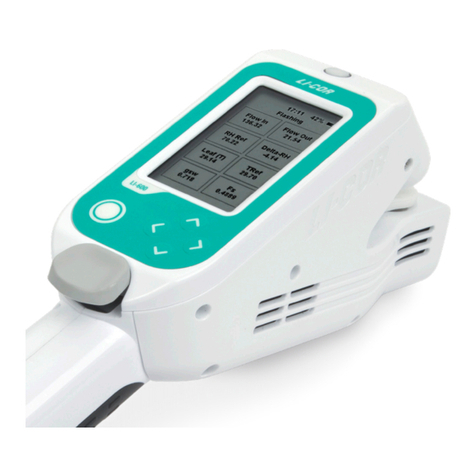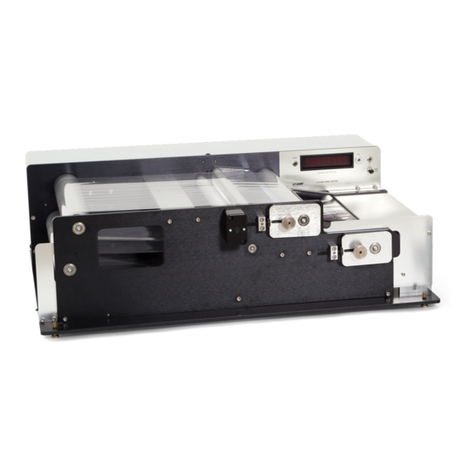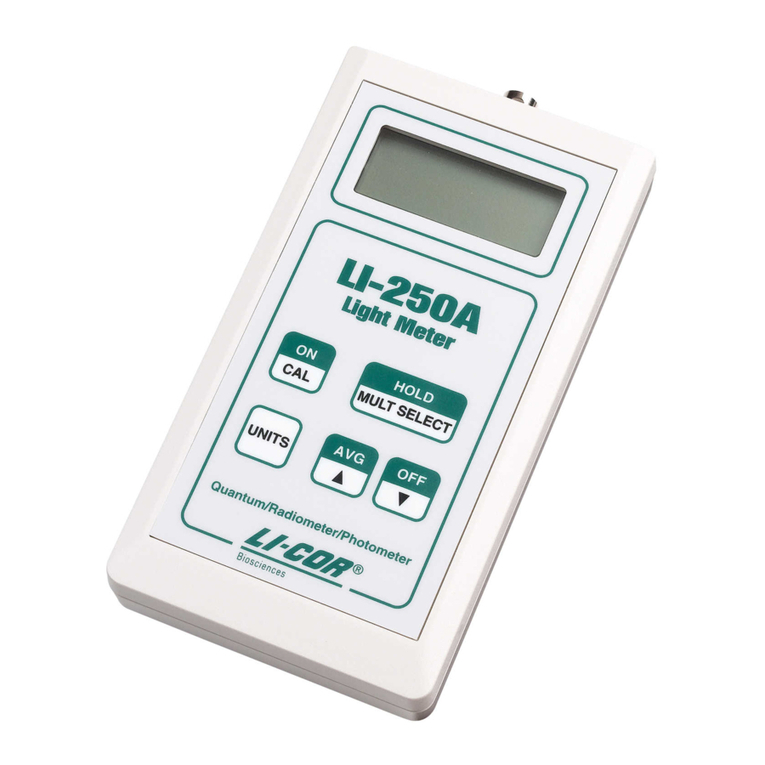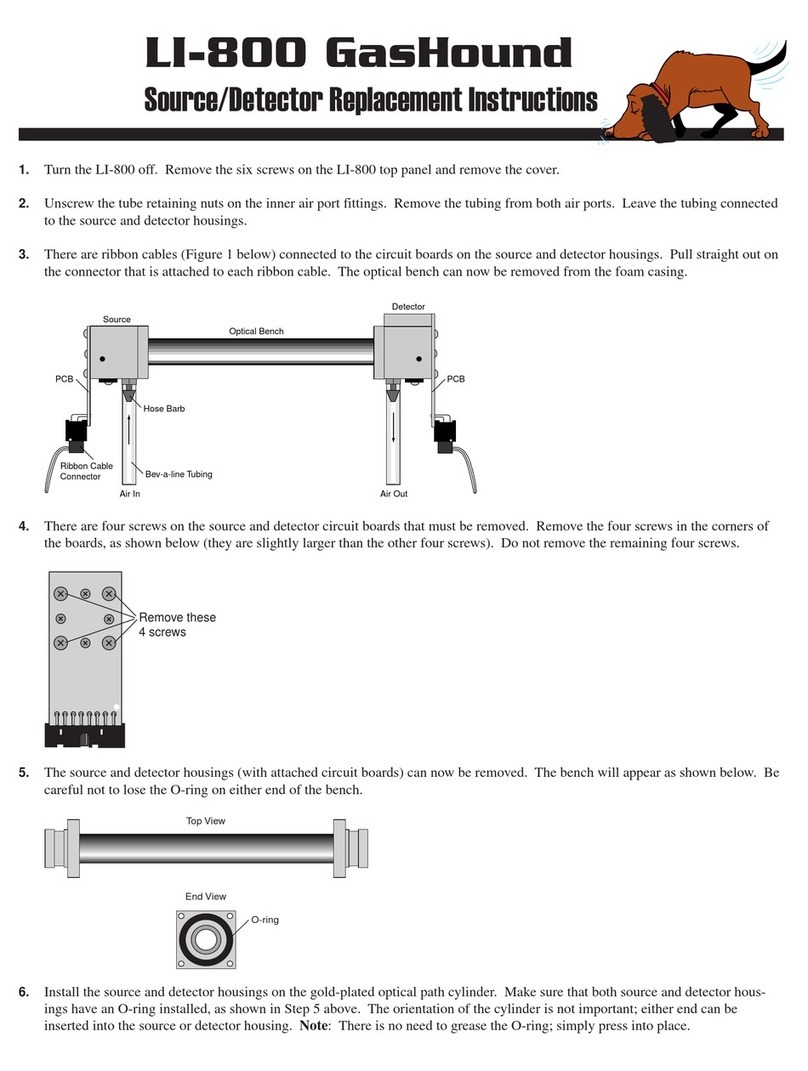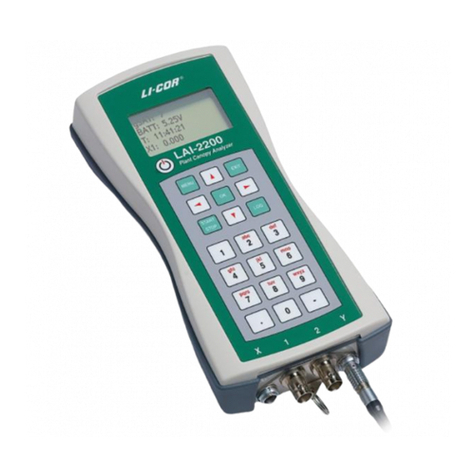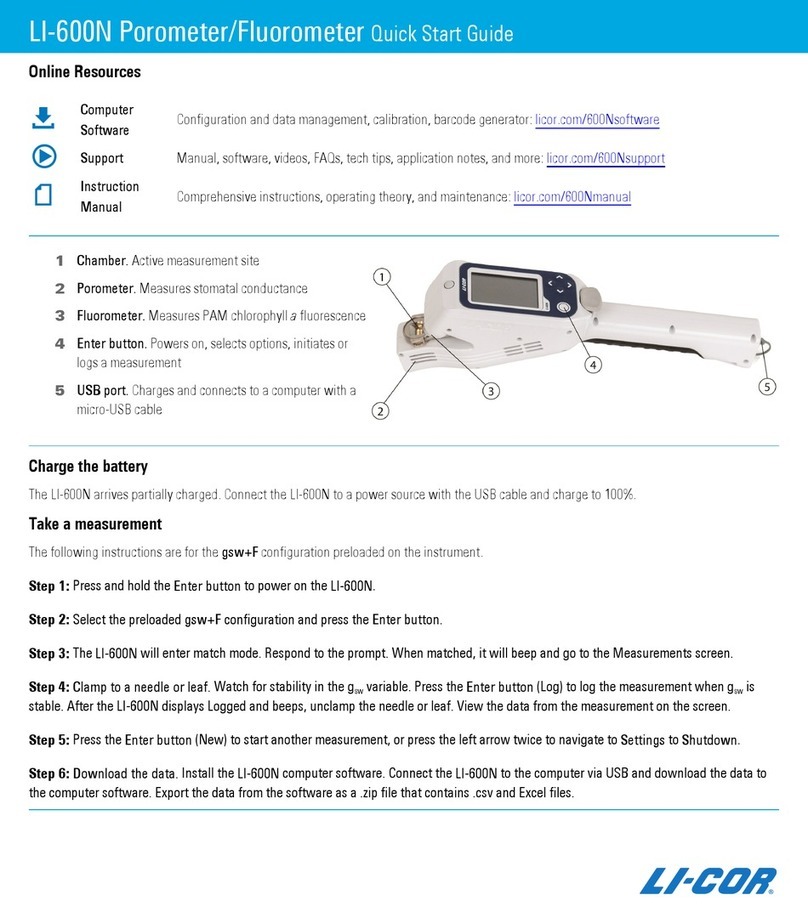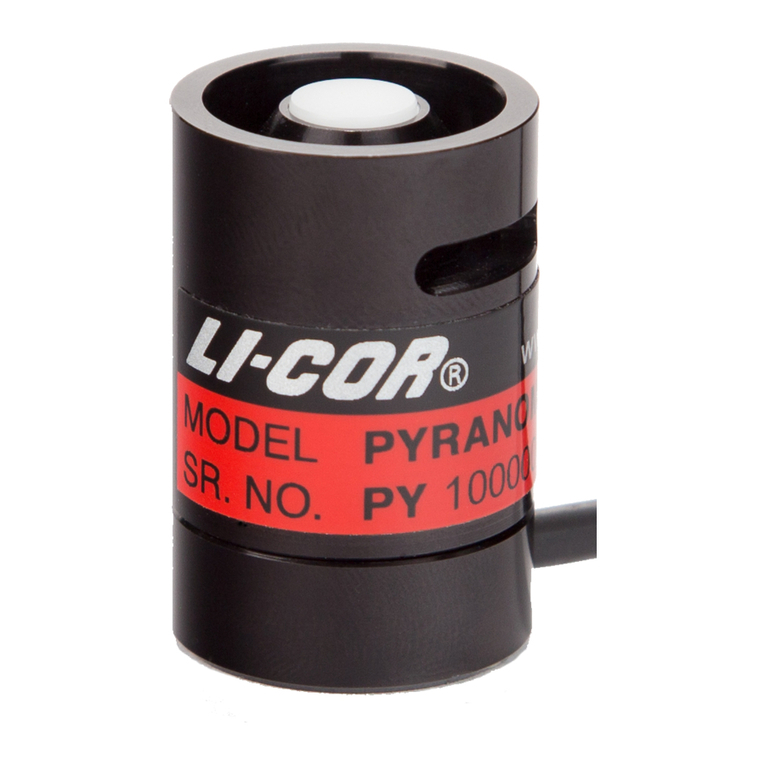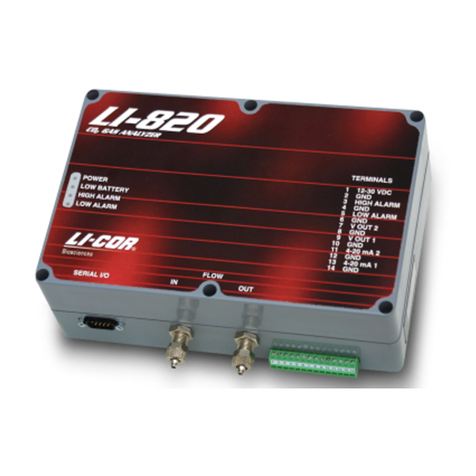
3Separate the source from the optical path.
Be sure that the inside of the optical path is clean—free of
dust and other contaminants. Clean it if needed, as
described in the instruction manual.
4Install the new O-ring that is included with the
source.
5Install the replacement optical source.
Tighten the screws firmly.
6Press the air-in tube over the hosebarb—be sure it
covers both barbs on the hosebarb.
Removing a section of tubing will reduce the total
volume of the analyzer, and this may affect some char-
acteristics of the analyzer, such as the T90 specification,
but the reduction in volume is generally negligible. There
is enough slack in the original tubing for a single replace-
ment of the source, but if you replace it more than once,
you may need to replace the entire segment of tubing.
Should you choose to recalculate system volume after
removing a segment of tubing (which is not required), the
Bev-A-Line® has an inside diameter of 1/8" (0.3175 cm).
If you removed 1 cm (0.39 inches) of tube, the volume
removed is about 0.079 cm3(π × r2× length; 3.14 ×
(0.3175 cm / 2)2× 1 cm = 0.079 cm3).
7Work the optical bench into the foam.
Be sure that the bench is secured tightly in the foam insu-
lation and that no parts are in direct contact with the sur-
rounding metal cradle.
8Connect the ribbon cables that were removed pre-
viously.
9Reassemble the instrument.
Make sure that the foam insulation on the inside top
cover is positioned over the optical bench; it is required
for thermal stability. Reconnect the top cover ribbon
cable and then install the top cover.
10 In the LI-830, LI-850, and LI-870, reset the source
hours to "0".
The LI-830, LI-850, and LI-870 record the number or oper-
ating hours for the optical source. You should reset this
count after replacing the source. Connect using the soft-
ware and then click Settings >Diagnostics and click the
gear button near Source, and then reset the hours.
11 Zero and span the analyzer as described in the instruc-
tion manual.
A simple zero and span will be adequate if the span gas is
close to the concentrations you will measure. A dual span,
however, will bring the instrument performance within
specifications across the full measurement range. If you
do not have zero and span gases, send the instrument
back to LI-COR for a factory recalibration.
Replacing the Optical Detector
You can also replace the optical detector.
1Remove the tube from the detector.
When replacing the detector on the LI-830, LI-850, or LI-
870, you will probably need to replace the entire segment
of urethane tubing, because cutting a portion to remove it
from the hose barb will not leave enough tubing to re-con-
nect using the original segment. A replacement segment
of urethane tubing is included in the detector replace-
ment kit for this purpose. On the LI-800, LI-820, or LI-
840/A, the tubing is long enough to reconnect.
2Remove the four screws that secure the optical
detector and shield.
2

